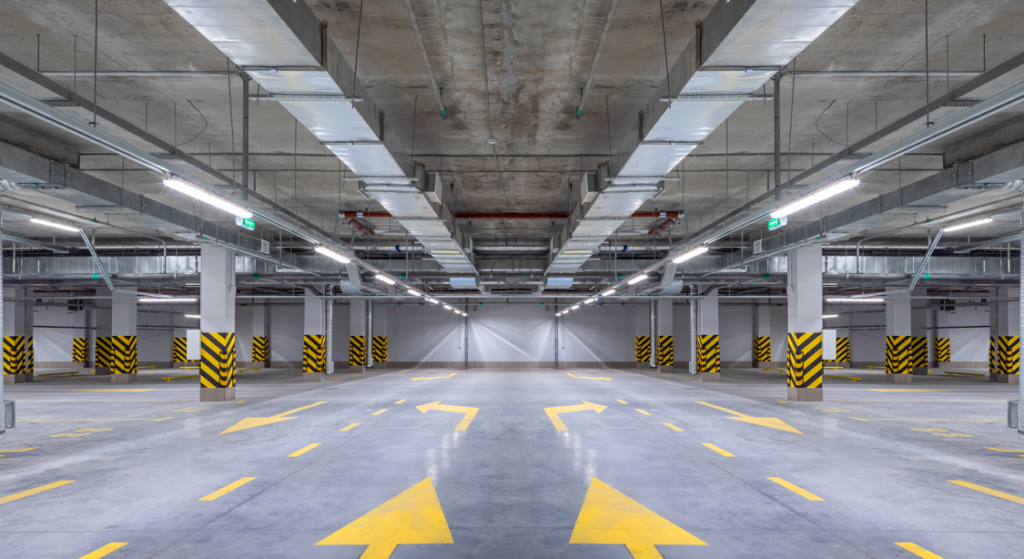From unconventional billing systems to adaptive re-use projects to garages that look like vending machines, parking facilities are facing some intriguing, new prospects.
 Long before the pandemic hit, parking needs had been trending downwards as more Americans embraced live-work-play environments, ride-sharing services, transit-oriented developments and lifestyles that weren’t tethered to personal automobiles and countless hours on the beltway.
Long before the pandemic hit, parking needs had been trending downwards as more Americans embraced live-work-play environments, ride-sharing services, transit-oriented developments and lifestyles that weren’t tethered to personal automobiles and countless hours on the beltway.
Following old norms, some tenants would often still insist they needed four parking spots per 1,000 square feet of office space in urban environments “but eventually the landlord would often tell us the tenant wasn’t using more than two or three parking spots per 1,000 square feet and the garage had a ton of empty spaces,” said Peter Jackson, Vice President of Brokerage at JLL Baltimore.
The pandemic, of course, gutted usage of commercial parking facilities and some industry experts believe parking levels won’t fully recover even after the pandemic ends. Permanent, hybrid schedules for some workers will lower parking needs. Mid-pandemic adoption of other modes of transportation – including dockless scooters and record-high sales of bicycles – could further lower demand.
“For example, I got rid of a car during COVID because my wife and I are no longer going off in opposite directions every morning, and I have always been a cyclist so somedays I could bike to work,” Jackson said. “A greater portion of the population has bikes now than ever before and on top of rising auto and gas prices, they might not want to pay monthly parking fees.”
To serve tenants in the evolving work world, property owners and landlords may need to change how they use their parking facilities. Secure bike rooms and shower rooms would appeal to cycling commuters. Hybrid workers, who may only come to the office two days a week, will likely want an alternative to paying for a full monthly parking pass.
“I think it creates an advantage, a differentiator when a landlord is able to provide a creative solution that addresses hybrid work models,” Jackson said. That could include assigning multiple parking spots to a company and providing technology that enables that firm to manage the spots used by employees.
In mixed-use properties, developers need to tailor parking to meet a different and growing need.
“It’s not just parking structures that we are rethinking. We also have designed streetscapes to set aside dedicated areas for pickups and drop-offs for Uber, Lift, food delivery services, and the never-ending online package deliveries,” said Cecily Bedwell, Principal of the Urban Design Studio at Design Collective.
Underutilized garages also raise questions about how to better utilize, repurpose or design parking facilities. As Americans seek to spend more of their time outside, certain garage rooftops or portions of open-walled garages could conceivably be repurposed as outdoor amenity or meeting space.
“If you own a parking garage within the city, you may want to convert it to a last-mile fulfillment center for e-commerce,” said Howard Brown, Chairman of David S. Brown Enterprises. “However, you would have to have the height between decks to accommodate that activity and most garages are only seven or eight feet between decks.”
Faced with continuing declines in parking needs, “I think anyone who is designing a garage today should be thinking about how to convert it in the future to a different use in the event that garage isn’t needed,” Brown said.
Some parking structures already present opportunities for redevelopment.
“The typical Texas doughnut mixed-use building that has a parking garage wrapped with residential and ground-floor commercial uses could become an infill opportunity,” Bedwell said. “The developer could potentially demolish the garage and add more residential units facing a good-sized courtyard in the middle of the building, providing additional revenue once parking demand diminishes.”
Technology also presents opportunities to create more efficient and adaptable garages. Automated parking garages which place cars in lifts and stack them in columns similar to a vending machine, are already popular in dense urban places, such as New York City, Bedwell said. Not only does the technology enable the owner to park more vehicles in limited or underutilized space, it also creates a building space that could readily be converted to other uses.
“The area needed for automated parking, unlike a traditional garage deck structure, is just a volume of space, a box, where the parking structure is inserted,” she said. “You don’t have decks or ramps to complicate or limit adapting it to another use; converting the space to another uses is easier.”